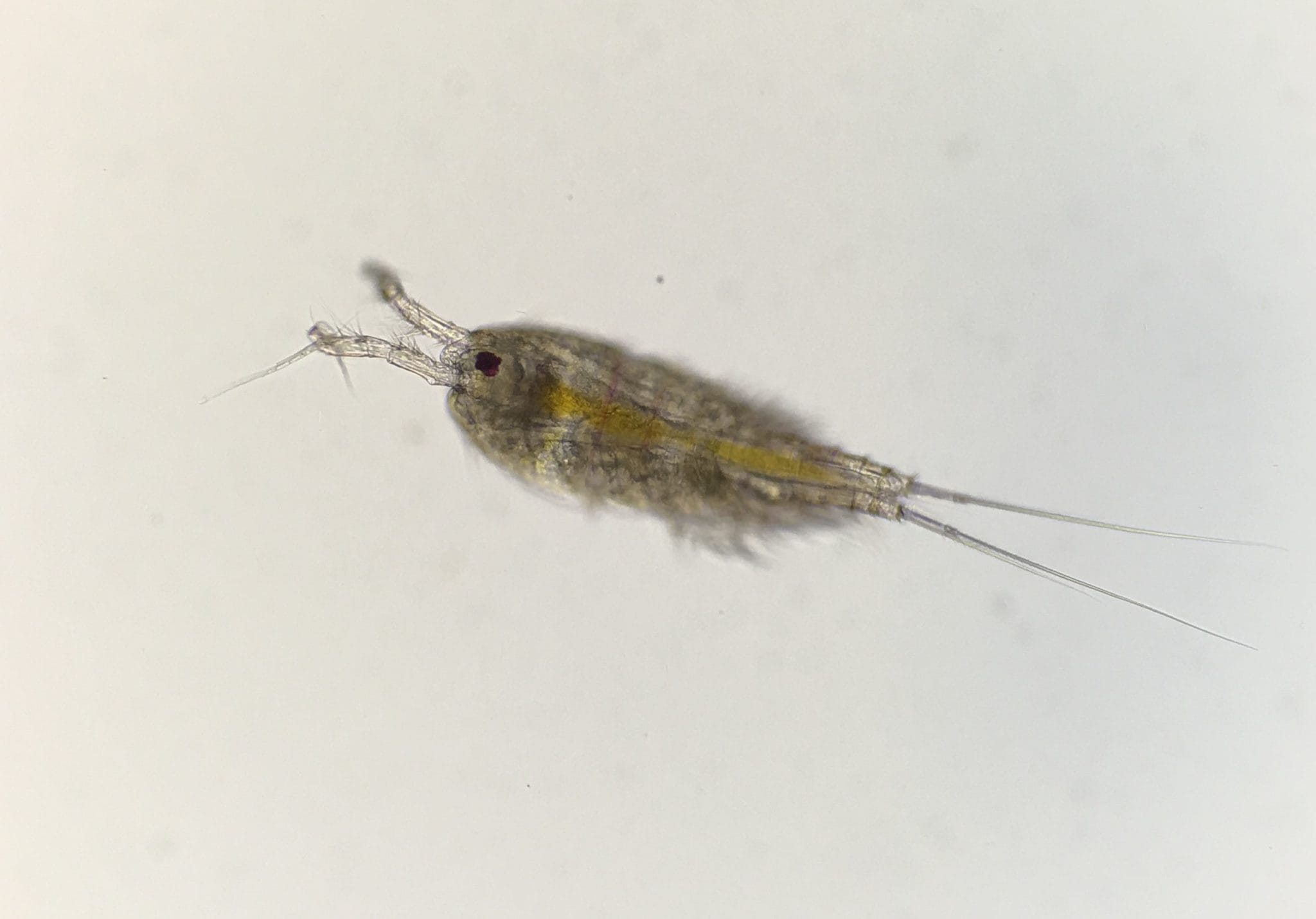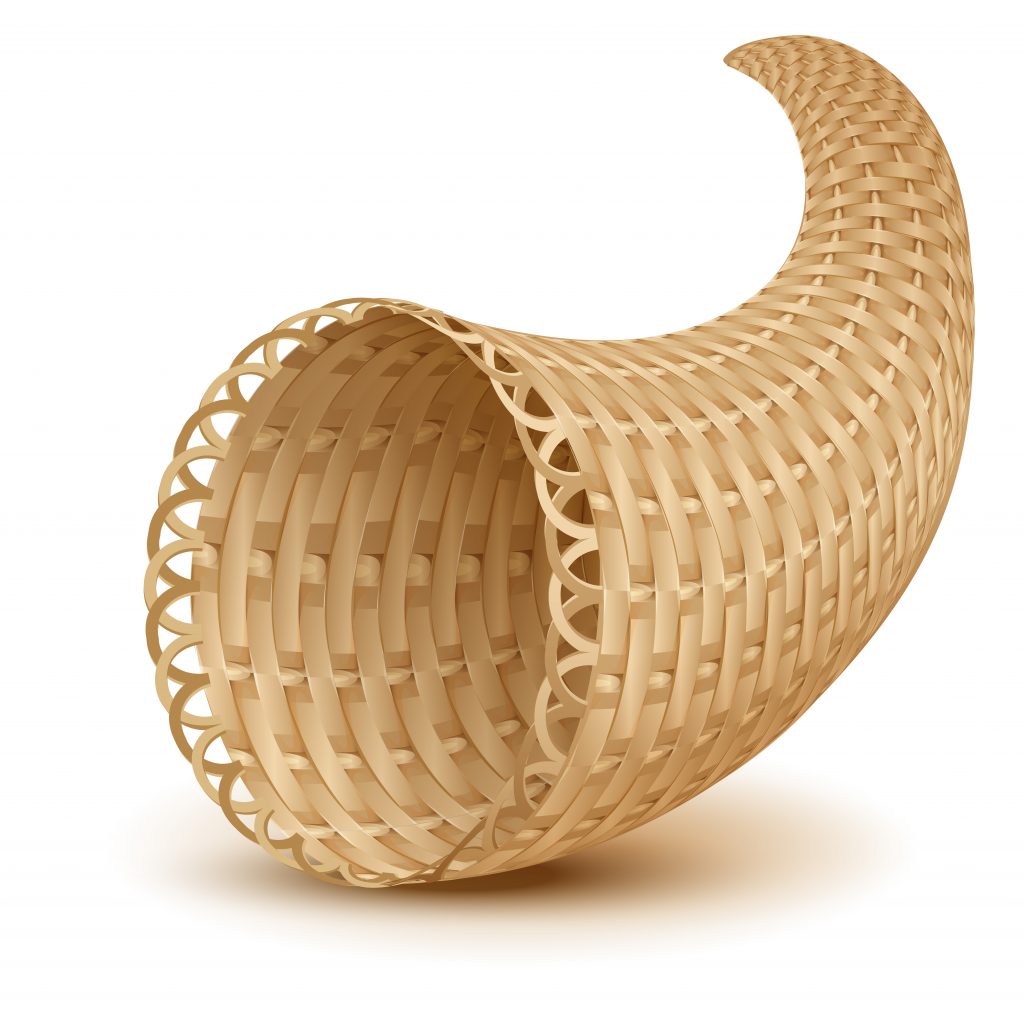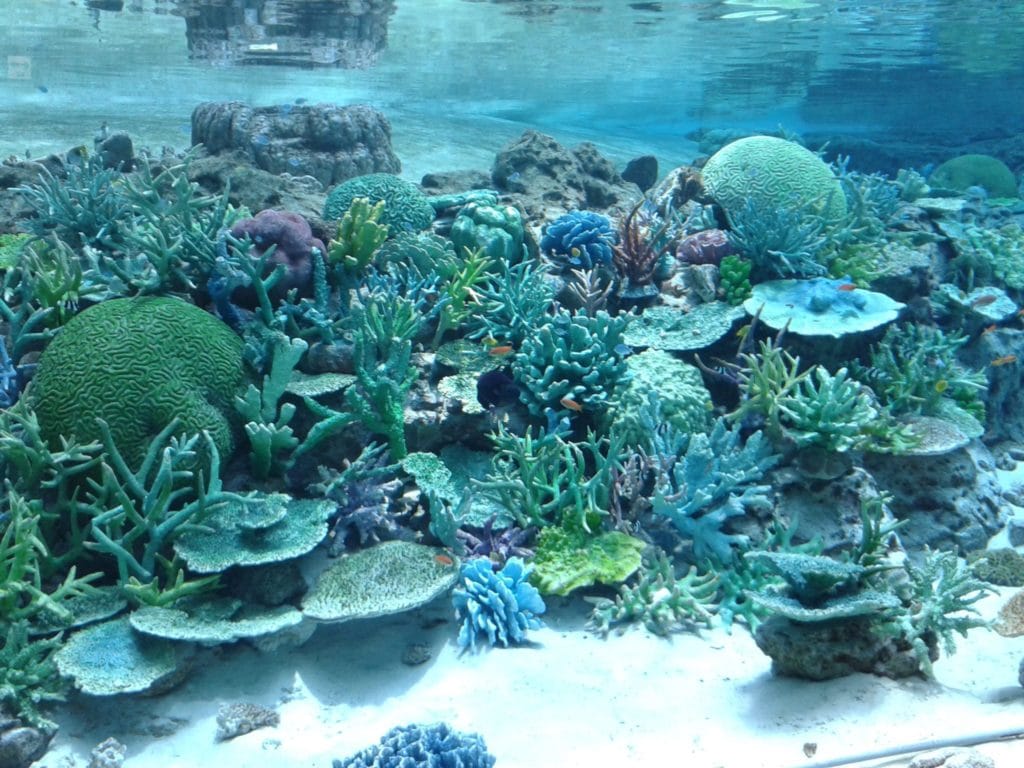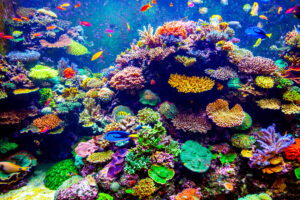Some of us aquarists are satisfied just to find a pod or two in our systems—just to know that they’re still there! Then again, some of us are always reaching for that endless bumper crop. Those who push for ever higher copepod yields might indeed be on to something really big.
Let Them Eat Pods

Copepod abundance can significantly influence the health and growth rate of captive animals. This is certainly so with corals and fishes, which are the most important groups of reef aquarium species. A great many of these creatures are even specially adapted to exploit copepods as a primary food source. This is hardly surprising since copepods are an early, key link in just about every marine food chain. So, it should come as no more of a surprise that they can improve the diets of diverse aquarium livestock.
This is best exemplified in the conventional reef aquarium system. In this case, you have different types of animals feeding on copepods of particular life stage (i.e. age/size). The young, larval copepods (called nauplii) are typically pelagic (that is, swim in the open water). Because they are relatively minute and they live suspended in the water column, they are easily snatched up by filter-feeding zooplanktivores.
On the other hand, the larger, older individuals of some species (mainly harpacticoid copepods) live a benthic existence (that is, they spend most of their time on the sea floor). Because these are relatively big and crawl around where they can be easily seen/captured, they are an important food source for smaller, microcrustacean-eating reef fishes such as mandarins.
[Copepods]
At all life stages, copepods are extremely nutrient-rich and are a wholesome item for pretty much anything that eats them. They are, in fact, relished and highly targeted by many reef species. Intense predation can strongly suppress or even obliterate an entire population of pods. Therefore, it is sometimes necessary to take specific actions to promote lasting populations within the aquarium system.
Pampering the Pods
A small investment in time and resources will maximize the productivity and nutritional value of your in-house pods. This can be accomplished fairly easily by taking a few simple steps. The first, and critical, thing to do if you want more pod production is this: give them a safe, hospitable microhabitat to live in. A course, rubbly bottom substrate and copious amounts of live rock will certainly help to provide them hiding places within the main tank. But in terms of acting like a full-on pod generator, nothing works like a refugium.
The refugium itself was named for its ability to support (i.e. provide refuge to) massive populations of microcrustaceans such as copepods. One of the most basic, but notable, aspects of the refugium is its partial separation from the main tank. Specifically, pods (especially nauplii) may spill out from the refugium to the main tank, but aquarium livestock cannot get into the refugium. This means that there can be a miniature ecological utopia where pods, while under less pressure from predation, can proliferate to their fullest potential. As they reproduce, they migrate from the hot spot into less densely populated areas. In that respect, you might think of a refugium as a micro-nature reserve.
Most refugia are used to house various species of macroalgae as well as pods. These macroalgae are most often used to remove excess nutrients from the aquarium water. But, as they grow and spread within refugia, macroalgae serve two additional tasks. First, dense algal growths form a very happy, super-high surface area home for pods. The waters within are calm and there is lots of stuff in there for them to eat, including dead macroalgal material.
Also, thick patches of macroalgae make refugia function as sediment basins. This is because of the way in which they dramatically slow water movement in areas throughout the algal mass. Particulate organic matter from the main tank tends to settle out in these parts of the refugium. The residing pods can then quickly swarm in to feed on the resulting accumulations of detritus. So, an undesirable waste product is ultimately converted into a valuable live food!
 Putting on Weight
Putting on Weight
The capacity of copepods for detritus removal is legendary, and quite welcome by all aquarists. However, pods cannot live on detritus alone. They depend on rich sources of omega fatty acids and vitamin C, for example, from algae. Arguably, algae is most important in the diets of copepods during their larval stage. But algal films can be a huge part of the diet of benthic adults as well.
Many reef aquarium animals benefit appreciably from the regular addition of live phytoplankton. This certainly includes copepods—especially during pelagic, phytoplanktivorous stages. Pods (and most animals, really) require many bio-compounds that are synthesized only by photoautotrophs (e.g. plants). Most significantly, this herbivory transfers the same essential vitamins and minerals further down the food chain as these nutritionally enriched pods are consumed by various sea creatures. Even color-enhancing pigments can be passed on in this manner!
But truly big copepod populations depend upon a large and steady input of algae. For aquarists, this need can easily be fulfilled with regular use of live plankton-based products such as OceanMagik™ Phytoplankton. These products promote high survivability of nauplii. They also nutritionally enrich pods of all life stages, which will in turn nourish your cherished livestock! If you’ve got a planted refugium and you feed phyto, then you’ve got loads of pods. And if you’ve got loads of pods, you’ve probably got a clean tank full of vibrant fishes and corals.
[Copepods]






Brice says
Great info! In my previous tanks I didn’t focus on fostering such an environment for my pods. This time around I’m going to add some phyto and a refugium to keep them reproducing.
Snowman says
Ive just recently learned about the huge benefits of copepods, since ive added them to my system my mandarin goby cruises around the tank like a stud!
Aquatic showcases says
Phytoplankton that’s how
Jose Pacheco says
Nice info, thanks algae barn!!!
I started my refugium two months ago, now is time to add copepods
fishtankpsycho says
Food chain is everything. Phytoplankton is a must for any healthy reef tank. Have to feed the pods.
Cole B Presley says
I need some pod hotels!!
Andrew B says
Love these guys!
Dee Oxendine says
Final
Hours fingers crossed
Doug Talley says
Good read
Beth Villmow says
Go pods!!!
Chell S. says
Pods can be as much fun to watch swimming in the tank as the fish are!
Karen Johnston Nation says
I only have a small 10 gallon and am interested in adding just because my yellow clown goby wont eat. I just recently started seeing then occur naturally in my tank so I am sure that is whats keeping him alive! I only saw him take one pellet is 8 days since we had him. I am tired of taking my tank almost apart to get up all the pellets I am throwing at him but he ignores them! He seems healthy and swims around and dosnt have a sunk in belly but kind of thin. I just dont want to spoli him and dont want huge populations forever in my tank, just something to keep him from starving untill he learns to take pellets like the 2 clown fish do! What should I do? Some people say cyclopeeze is good to get them eatting but it can raise nitrates and phosphates I am sure since it frozen or freeze dried, plus no benefit to my reef so may as well add tis since it does. I wonder if copepods can live off of reef roids which is zooplankton beacause thats what I feed corals and I am pretty sure that is how they got inmy tank and I saw one crawl under a rock that was huge! I also saw a redish one crawling on rock so that is the tiger ones and I see some floting around the water colum that look like the typsi. I also have pineapple sponges I think the YCG has been eatting of rock. Which ones should I get? He has a small mouth but needs something that he can eat right away. Are the tipse big enough to eat right away or d o I have to wait for them to get bigger?Only other fish are clowns but may move them to bigger tank and put yellow tail damsel with him and possibly another small fish. Maybe a tailspot blenny, which may have feeding problems as well! This fish is a cute little pain in the but! lol
Debra Straw says
We have a 30 gallon cube. We have a green Mandarin goby. We have been ordering pods and pouring some into the tank daily. He still seems to be losing weight. We decided to set up a pod hotel but we are worried that the phytoplankton will cause too much algae to grow in the tank that it will take over the tank. Any advice you could offer would be appreciated!